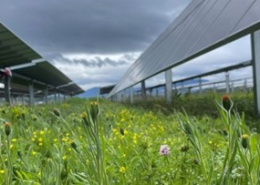
Case Study: Oregon’s Planet- and Pollinator-friendly Solar Site
As we continue to deploy clean energy across the United States, more attention is being paid to how best to develop clean energy projects at the pace and scale that the climate crisis requires, while also ensuring that we are taking care of the sites and communities that host those projects.

Case Study: Jack’s Solar Garden
An aerial view of Jack's Solar Garden
Jack’s Solar Garden is a community solar garden in Boulder County, Colorado. With its 1.2-MW, single-axis tracking solar system, it is the largest commercial agrivoltaics research site in the…
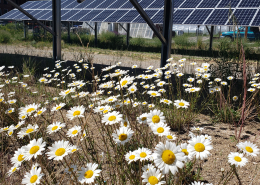
NCAT Headquarters – Turning Solar Site into Pollinator Habitat and Grain Trialing
National Center for Appropriate Technology is headquartered in Butte, Montana. A 45-kW solar array was installed on the campus in 2016, when the land was graded and the remains of an old road are still present. Since this installation, native…
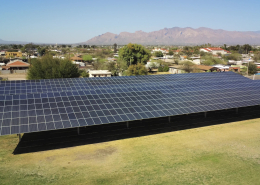
Manzo Elementary School Solar Garden
Manzo Elementary School, located in Tucson, Arizona, is a Flagship School for the University of Arizona Community and School Garden Program and a fellow agrivoltaic site to Biosphere2. The school has had an award-winning ecology program for…
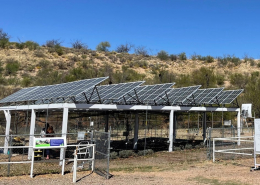
Biosphere 2 Agrivoltaic Learning Lab
Biosphere 2, located in Oracle, Arizona, houses one of the first agrivoltaic research sites in the United States. The site was built seven years ago with a 21.6-kW solar PV array shading a 9x18-meter garden. Greg Barron-Gafford, along with several…
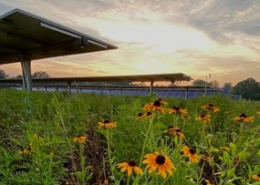
Pollinator-Friendly Solar in Plains, Georgia: A former U.S. president’s clean energy legacy
Pollinator-Friendly Solar in Plains, Georgia: A former U.S. president’s clean energy legacy
By Briana Kerber
Sunset with Gaillardia and Solar Array. Photo: Jill Stuckey
With clean energy developments continuing to ramp up across…
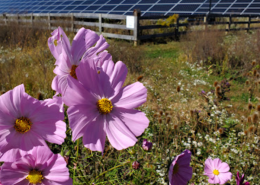
Solar Pollinator Habitat Discovery Trail
In Warren County, Ohio, the Soil and Water Conservation District and the Park District collaborated to combine solar energy to power a park with pollinator habitat and an educational trail. The Solar Pollinator Habitat Discovery Trail was created…
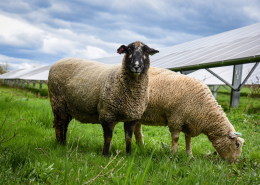
Case Study: Solar Grazing at Susquehanna University
Some institutions of higher learning are reducing fossil fuel use by investing in solar panel installations on campus. However, most of them don’t use grazing sheep to manage the grassland under their panels. In 2019, Susquehanna University…
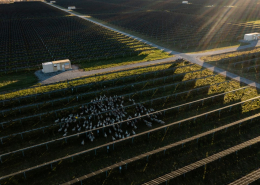
Case Study: EDF Renewables Amprior Site Agrisolar
Arnprior Solar site in fall and winter
All photos courtesy of EDF Renewables
EDF Renewables (EDFR) has dedicated its efforts for over 35 years to create a sustainable energy economy. They have developed nearly 24 GW and continue…
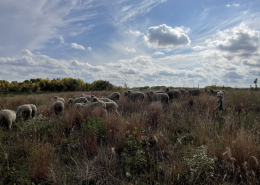
Case Study: Cannon Valley Graziers
Cannon Valley Graziers is a vegetation-management company based in Southeastern Minnesota. Since 2018, Arlo Hark and Josephine Trople have been using their flock of sheep to manage vegetation in a variety of environments, working closely…
